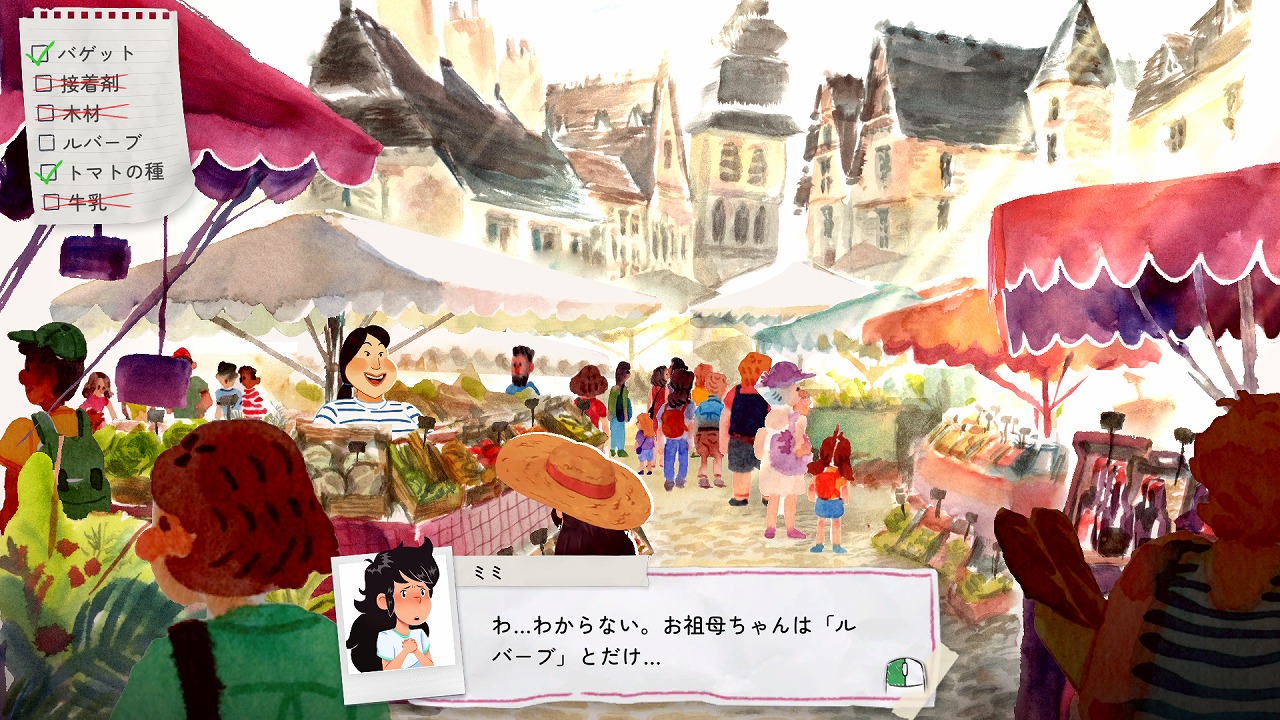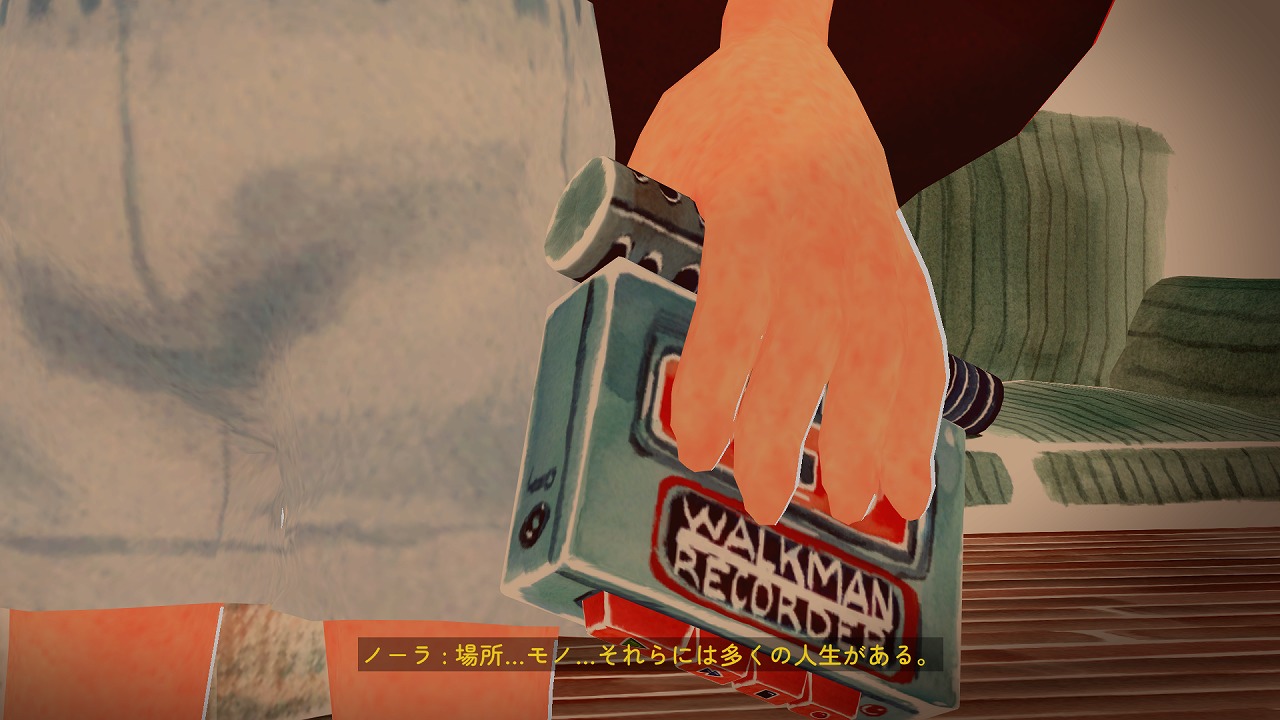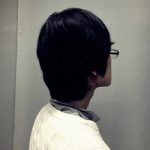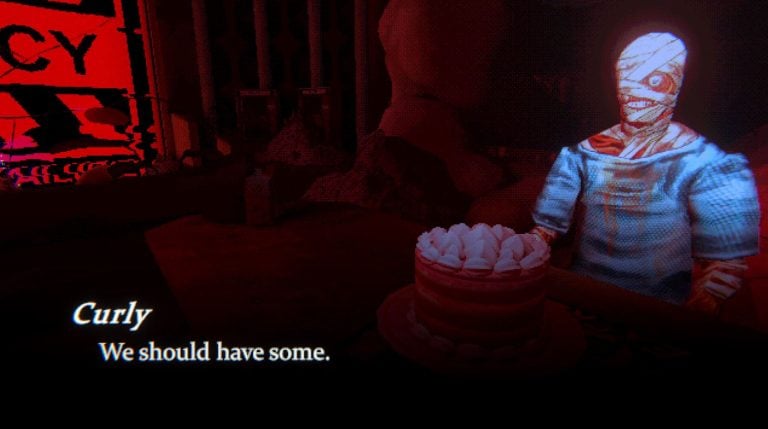Dordogne is an adventure game by Focus Entertainment with a heartwarming story and unique watercolor-based artwork. We conducted a brief interview with Cédric Babouche, the art director of Dordogne, about the artwork, which is the greatest feature of the game. This interview was originally published on our Japanese site AUTOMATON, and thus includes content geared towards Japanese readers.
We can start with a brief introduction. Can you tell us things like what you’re called, where you’re from, what your roles were in this project and about your previous experience in game development?
Hi, I’m Cedric Babouche. I’m 46 years old and I’ve been working in the animation industry as a director and art director for 17 years now. I’ve worked on different tv shows and movies. Dordogne is my very 1st game and it’s the same for the whole team of UJNSQ/Umanimation. 20 years ago, when I was an art student, I only had one experience of working on a PS2 game (Piglet’s Big Game for Disney) as a texture artist, but I was more interested in the animation industry at that time. 5 years ago, I decided to start a new business in transmedia, which includes gaming and animation. Doing game jams developed my appetite for video games, and that’s how I decided I wanted to be more involved in video game creation. For Dordogne I was the author and artistic director. We could also say that I was the director as it was created like a movie. I supervised all departments except for the development team as I don’t code myself. Most of my personal projects are based on a mix between traditional art techniques and 3D. I also do visual concept for other companies, comic books and I teach animation, storyboard and layout.
How about your experience in gaming? What are some of your favorite games?
I have loved video games since I was little. I’ve owned a Nintendo Game and Watch since I was 7 years old. During my adolescence, I had an Atari ST and PC. I even tried to code at the time, but I was not good at it and I preferred to draw. It’s also thanks to video games such as Another World, Gobliiins (Coktel Vision) and LucasArts games that I started drawing on the computer (with only my mouse at that time). I owned almost all the PlayStations (except for the PS2 because I was a student with little money) until now and the Nintendo DS, Wii and now the Switch and PS4. I play a lot of different games. I like puzzle games as much as adventure games from Level 5 to Naughty dog, including the magnificent creations of Amanita Design and Ustwo Games. If I had to name some of my favorite games, I would name all of Fumito Ueda’s games, Shadow of the Colossus in particular. The game itself is magnificent, but what I like above all is the believable mythology created around the characters and universe.

Moving onto the main topic, Dordogne is distinguished by its watercolor art style. How did you come to participate as a visual artist?
I’ve been painting in watercolor since I was 14 and haven’t stopped since. I did a lot of digital creation in the animation productions I worked on, but I always tried to bring back watercolors. One of the methods that allowed me to achieve this was to mix it with 3D. I spent a lot of time finding my own way to mix these 2 techniques. I wanted to avoid transforming the original material painted on paper as much as possible. I also wanted to avoid using 3D lights or creating shaders that looked like watercolor but weren’t. When I managed to find the right approach, it seemed important to me to use it with a story that would stick best to it. Dordogne is a project that I started almost alone at the beginning. It’s a very personal game and I never imagined a technique other than watercolor to tell this story. I’ve been using it for 30 years and it works narratively speaking, but also in a financial sense. Since I’ve mastered this medium, we were able save a lot of time and money by having me paint almost all of the sets.
How would you describe the appeal of Dordogne to those who don’t know it?
Dordogne is a magnificent region. Very typical of the French countryside with old stone villages built along the river. Its particularity is that it is in a cocoon of cliffs with ancient troglodyte dwellings that date back many centuries. It is rich in caves and hidden discoveries. Its most famous tourist sites are the caves of Lascaux. I think its beauty lies in how it always has something to show regardless of which village you visit. Whether you are underground in a cave, up high up climbing the cliffs or in a kayak descending the Dordogne, you are always swept away by the diversity of the landscapes crossed. It is a region where the light mixes with the smell of walnut trees, where excellent food is served by people of great kindness. When you come to Dordogne, you generally don’t want to leave.

What were your artistic goals in the art and design for this title?
My objective was to treat a simple story, without antagonism – to reflect on the common memories that we all have regardless of our origin or gender. To question ourselves about our family, which we never really know. My idea was also to question our memories. Are they really as wonderful or as dark as we imagined? Going from these ideas, watercolor seemed to perfectly complement the narrative direction. I wanted to create the feeling of being enveloped in the atmosphere, being able to feel the thickness of the air and almost smell the smell of nature. The artistic work certainly counted enormously in this effect, but the music of Supernaive and the sound design of Sylvain Quément had a primordial impact on the sensory aspect of the game. Each mini game and each ride had to be as close as possible to these sensations. We worked a lot on creating the impression of being in direct interaction with objects and people. Likewise, we tried to avoid having too many cinematics. We had to find a way to pass important information between the characters only through the game. Hence this mechanic of capturing words in the environments. They are lost in space, like unpainted white shapes in watercolor. This allows us to experience exploration and curiosity while advancing.
How did the process of incorporating the watercolor paintings into the rest of the visuals and 3D imagery look?
The process itself is quite simple. We use the camera mapping technique which consists of projecting the watercolors onto 3D models in low definition. We do not use 3D lighting or shading (except for the characters). We define the main camera movements in order to see what size and angles of cameras to paint. In Dordogne we don’t have complex movements, so the illustrations are easy to project, but for more complex experiences like kayaking we had to use another technique to make it look like a popup book. We are currently developing tools, for our next projects, to refine this camera mapping technique and be able to move 360° in hand painted environments. This camera mapping technique is simple and has been used for a long time in the animation and VFX industry. What’s different in our case is the illustrative approach that is done by hand. It takes much longer to learn to paint and master watercolors than to learn 3D. We also work with the team to push their learning of watercolor.

“Photographs,” “sounds” and “scents” are the key to the story of this game. What was the thought process behind choosing these three elements?
All human beings collect something. Consciously or unconsciously, we all keep track of our past. I wanted us to be able to use as many in-game senses as possible to evoke memories for players. The photos bind us to the sense of the gaze. Sounds to the sense of hearing. Words to the sense of touch (as if we were writing our poems with our pen). We couldn’t render the sense of smell, so we tried to make it so that the sum of all these elements added to the artistic direction gives the feeling of being in Dordogne, in nature. Moreover, if you play in a forest, park or garden, or simply surrounded by plants, you will see that the feeling of well-being carried by the game is very real.
In what ways do you hope the Japanese audience will interact with and enjoy the game?
I’ve visited Japan at least fifteen times, both towns and the countryside. And even if our cultures are different, our admiration for contemplation, for family moments and nature is common. Memories of wading in the water, cooking with the family, enjoying incredible encounters just by going to the market. Memories of creating lots of adventures during vacation while young. We have sought to transcribe pleasant and sometimes less common memories to tell our story – memories the whole world can share. This is a game that you can play alone as an adult. But you can also enjoy it with your friends around you and contemplate the landscapes you visit. You can also sit your children in your lap and share certain moments of the game in peace. And you never know, your grandparents may stick their heads out the door to see what Dordogne looks like. It is an experience that plays out in many different ways. It’s an experience that won’t be complicated but that will make you, at every step, want to know more about Mimi’s life. The whole team has put a lot of effort into it, and we hope you will feel it.
Is there anything you would like to tell our readers?
Take your time! Take the time to walk around, look for the hidden elements to discover the whole story. When you’re on the kayak, spend hours there if you want! The game is made for that. When you can, take pictures and share your experiences with us. Show us the photos taken in the game! Share your pages created in the game with us! We would love that. It is a game that lasts 6 to 10 hours but your pleasure in walking around and contemplating can give you a much longer experience. The whole team hopes you’ll feel the passion and energy we put into the game.

Dordogne is available for PC (Steam)/PlayStation 4/PlayStation 5/Xbox One/Xbox Series X|S/Nintendo Switch.





